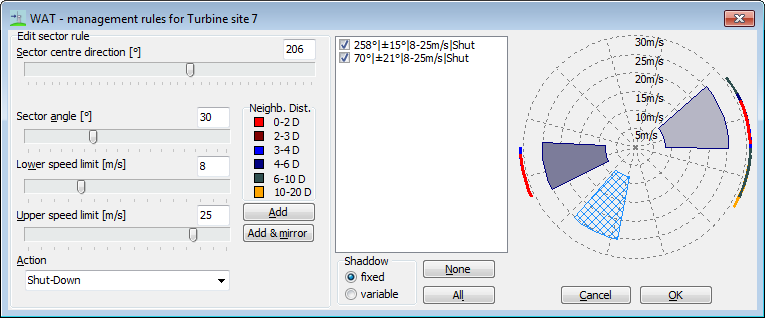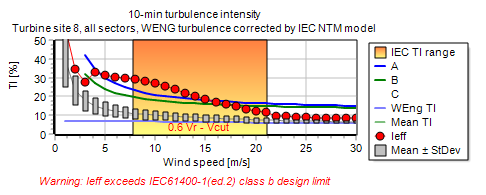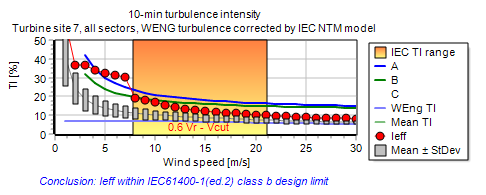Wind sector management
For some wind-farm layouts, e.g. a single row of turbines on a ridge, operation in the wake of neighbour turbines may be infrequent. In this case, it is tempting to reduce turbine separations, as the loss of power production will be modest. The problem with such a design is, however, that fatigue-damage of materials like glass fibre is sensitive even to rare occasions of severe turbulence. Although not yet sanctioned by the IEC, developers sometimes mitigate effects of wake turbulence by shutting down selected turbines during special wind conditions or operate them in load-reducing modes.



WAT models sector management by a list of wind conditions, where individual turbines are either shut down or working with alternative power- and thrust-coefficient curves. Turbulence in sectors where the local turbine is shut is excluded from the effective turbulence intensity estimate, and turbulence from sectors with regulated neighbour turbines is modified. These differences will reduce the effective turbulence intensity.


Manual editing of sector-management for a big wind farm can be tedious, but WAT provides an option for automatic sector management rules, which solves problems with effective and extreme turbulence intensity and minimal reduction of annual energy production.


